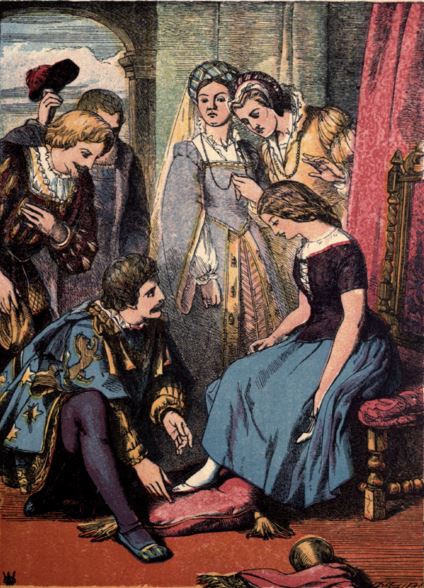
Fairy Tales have entertained and fascinated us for centuries. We listened closely to the tales of good versus evil, white knights rescuing damsels in distress, and evil enchantresses wreaking havoc. But, almost like any good horror movie, we can enjoy their telling partly because we know they aren’t real. Nothing told in these stories can actually come to life and affect us. What if we’re wrong, though? What if these fanciful tales aren’t based purely on imagination after all? What if we discovered that these tales are actually based on true events? The thought is nice when you consider all of the good parts of fairy tales, but it becomes somewhat frightening when you include the parts that are meant to scare little children.
Well, I’ve found a few people whose lives do appear to follow the fantastical course laid out in fairy tales. Here are some women who seem to have lived out actual fairy tales. Some of them were the beautiful princess, but others were the wicked witch. You won’t believe some of these tales. I’ve included women who are thought to be possible inspiration for the story Snow White, one woman that has gone down in fairy tales as a witch is actually the injured party, and I, of course, had to included the few women who have been lucky enough to live the Cinderella dream. These true stories will make you sigh with envy, astonish you with their almost fantastical nature, and make you ponder the issue of good versus evil that these tales explore.
Top 10 Women Whose Lives Mirror Fairy
Tales
#10
Woman: Grace Kelly
Fairy Tale: Cinderella
The Story:
Grace Kelly’s life has all the makings of a fairy tale. In the style of Cinderella, Kelly, an ordinary girl (aside from the famous acting career) rose far above her station and became royalty. Ms. Kelly and Prince Rainier III’s first meeting only aloud the pair the briefest of introductions. However, she must have made quite and impression because during Rainier’s trip to the U.S. he made a special effort to meet Ms. Kelly as well as her family. They spent a totally of three days together before the Prince proposed. Ms. Kelly took to royal life right away, dropping her acting career and embracing her duties as princess and her philanthropic work. This may not exactly be a rags to riches story, but the whirlwind romance and the elevation of an commoner to royal status makes this tale a dead ringer for Cinderella.
Sources:
Haugland, H. Kristina (2006). Grace Kelly: Icon of Style to Royal Bride. Yale University Press. pp. 966–. ISBN 978-0-300-11644-1.
“Grace’s Riviera Romance”. LIFE (Time Inc): 14–15. May 30, 1955. ISSN 0024-3019
#9
Woman: Anastasia
Fairy Tale: Folklore of Missing Romanov
The Story:
The iconic tale of the lost royal Anastasia of the Romanov family is certainly an example of a real life fairy tale. The rumors following the royal family’s execution and the possibility of a survivor have rocketed this tale into the world of fantastical fairy tales. While the likelihood of a survivor has been almost definitively proven impossible, the idea still fuels people’s imaginations. It encouraged countless young women to make false claims of being the lost Romanov, the most famous being Anna Anderson. The story has also inspired many movies, including the 1997 musical film Anastasia, which depicts what might happen if Anastasia really were alive and was discovered and returned to her rightful place as royalty. This may not be related to a specific fairy tale, but I would definitely argue that it has become its own fairy tale all the same.
Source:
Kurth (1983), pp. 33–39
#8
Woman: Princess Diana
Fairy Tale: Cinderella
The Story:
Here is another example of the Cinderella fairy tale making an appearance in real life. Princess Diana’s difficult childhood marked by her parent’s divorce and Diana living under her father’s custody brings to life the image of the poor girl growing up in a home devoid of love. This picture even comes complete with the requisite evil stepmother. Then comes the handsome (for the moment) prince, who sweeps her off her feet and whisks her away from her past. The wedding between Diana and Charles was even billed as a “fairy tale wedding” by the English press. Unfortunately this fairy tale does not have a happy ending, as I’m sure most everyone knows. Diana’s prince was actually a frog in disguise, proving to have none of the good qualities that a typical fairy tale hero possesses. And so, our poor princess gives up her fairy tale life, and in the end is lost to the world. As with any good tale, however, her story lives on in people’s hearts and minds.
Sources:
“Princess Diana: The Early Years”. British Royals.
“Raine Spencer: Friend not foe”. The Independent (London). 15 December 2007.
“1981: Charles and Diana marry”. BBC News. 29 July 1981.
#7
Woman: Maria Sophia Margaretha Catharina Von Erthal
Fairy Tale: Snow White
The Story:
Maria Sophia von Erthal is believed to be a true life inspiration for the tale of Snow White. Born in 1729, Maria grew up in a castle in Lohr, Germany. Maria’s mother died when she was very young. Her father wasted no time in remarrying a woman named Claudia Elisabeth von Reichenstein. Reichenstein, a domineering woman, reportedly paid little attention to Maria, focusing on using her new position to benefit her own children from her first marriage. While her stepmother didn’t send a huntsman to kill her, scholars believe that Maria’s existence was not easy. Is this starting to sound familiar? Well, just wait, it gets even better.
The castle in which they lived, which is now a museum, boasts a famous mirror that Prince Philip Christoph von Erthal gave to his second wife as a gift. The mirror, which was popular among the aristocrats of the period because they allegedly “always spoke the truth,” is referred to as “The Talking Mirror.” But, that’s not all. Maria Sophia also perished due to the machinations of her stepmother. The poisoned apple that Maria bit into was partly covered in the juice of the poisonous belladonna. Unlike Snow White, however, Maria did not come back to life. She had no prince to save her.
Sources:
Stacy Conradt. Snow White: Not Just a Fairy Tale. http://mentalfloss.com/article/29186/snow-white-not-just-fairy-tale. Nov. 7, 2011
“Blancanieves, ¿una Princesa o una Condesa Alemana?”. Muchachadesal.com. 2013-05-30.
Loibl, Werner (1992-08-28). “Schneewittchens herrische Stiefmutter (The domineering stepmother of Snow White), with further references”. Lohrer Echo.
#6
The Woman: Saint Barbara
Fairy Tale: Rapunzel
The Story:
The story of Rapunzel is thought to have originated with the tale of Saint Barbara. Barbara, the daughter of a wealthy merchant named Dioscorus, lived in what is now modern day Turkey. In order to preserve her innocence and keep the outside world from touching her he locked her up in a tower. While wiling away the hours isolated in her tower, Barbara secretly became a Christian. Because of her devotion to Christ, she rejected any offers of marriage her father brought to her. This tale, unlike Rapunzel, ends in Barbara’s death due to her belief in Christ. Barbara, unfortunately, didn’t get her prince either, dying as a martyr instead.
Source:
http://mom.me/home/7523-weird-truths-behind-fairy-tales
#5
The Woman: Kate Middleton
Fairy Tale: Cinderella
The Story:
Kate Middleton is my third example of a Cinderella story. I though it appropriate to further Diana’s story, and see the much more positive example of her son’s marriage. Kate’s story really does emulate the rags to riches plot. Kate comes from modest roots, her parents being humble flight attendants. Her mother’s family comes from hard working woolen cloth merchants, and her father’s ancestors were comprised of working class laborers and miners.
Kate and William met while they were both students at St. Andrews College. The two hit it off and another fairy tale romance was born. Their wedding, also compared to a fairy tale, dominated television screens all over the world. The support behind this new fairy tale romance is monumental. People want Prince William to succeed where his father did not. Prince William appears to be staying as far away from his father’s example as he can, doting on Kate and highly protective of her. It seems that while on generation couldn’t keep the fairy tale alive, the next one is more than up for the task.
#4
The Woman: Jenny Lind
Fairy Tale: The Nightingale
The Story:
Hans Christian Anderson found inspiration for his stories through many of the people he interacted with. One of these people was the extremely popular Swedish opera singer, Jenny Lind. Anderson had a strong affection for Lind, and the two were known to be good friends. Lind inspired a number of Anderson’s tales, the most notable being “The Nightingale.” This tale centers around a Chinese Emporer who falls in love with a nightingale’s song only to lose interest after obtaining a mechanical bird. Anderson wrote “The Nightingale” after watching one of Lind’s Copenhagen performances. Ironically, the tale also impacted Lind’s life. After the stories publication, Lind became popularly known as “the Swedish Nightingale.”
Source:
Lauren Davis. “9 People Who May Have Inspired Fairy Tales.” 10/08/14. http://io9.com/9-real-people-who-may-have-inspired-fairy-tales-1643862034
#3
The Woman: Countess Margaret von Waldeck
Fairy Tale: Snow White
The Story:
We find another example of the story Snow White in the life of Countess Margaret von Waldeck. The Countess was reportedly strikingly attractive and the daughter of Phillip IV, the German Count von Waldeck-Wildungen. The figures of the dwarves are speculated to have originated from the copper mines that her family owned. Most of the workers there were children, and their growth became stunted due to malnutrition and the awful working conditions. As with the tale of Maria Sophia, Margaret’s story also contains an evil stepmother. At the age of 16, because of her problematic relationship with her stepmother, Margaret was forced to leave her home.
But, trouble seemed to follow her to the court in Brussels where she caught the eye of Prince Phillip II of Spain. Phillip hoped to marry Margaret, but his stepmother hated her, and his father did not approve of the union for political reasons. So, Margaret had to be taken out of the picture. At the age of 21 Margaret died of poison, the perpetrator never to be found. However, in this tale, the stepmother can be ruled out as a suspect, as she was already dead.
Sources:
Stacy Conradt. Snow White: Not Just a Fairy Tale. http://mentalfloss.com/article/29186/snow-white-not-just-fairy-tale. Nov. 7, 2011
“Blancanieves, ¿una Princesa o una Condesa Alemana?”. Muchachadesal.com. 2013-05-30.
#2
The Woman: Elizabeth Bathory
Fairy Tale: General Character Type
The Story:
So far all of my examples have been of women who resembled the role of the heroine in different fairy tales. Elizabeth Bathory, however, falls squarely under the category of the iconic evil queen. Called such names as The Blood Countess and Countess Dracula, Bathory is one of the most notorious serial killers of young women in history. She tortured and killed hundreds of girls between 1585 and 1610. One famous anecdote about Bathory claims that she bathed in the blood of virgins to retain her youth. She sounds a bit like the evil queen in the movie Snow White and the Huntsman. Bathory and her vicious exploits became part of national folklore, and the tales of her wickedness continue to draw people’s interest to this day.
Sources:
Ramsland, Katherine. “Lady of Blood: Countess Bathory”. Crime Library. Turner Entertainment Networks Inc. Retrieved 13 June 2014.
Letter from Thurzó to his wife, 30 December 1610, printed in Farin, Heroine des Grauens, p. 293.
“The Plain Story”. Elizabethbathory.net.
#1
The Woman: Katharina Schraderin
Fairy Tale: Hansel and Gretel
The Story:
My top choice for women whose lives resemble fairy tales also focuses on a woman who became the inspiration for the witch in Hansel and Gretel. Ironically, you’ll see that this characterization was completely wrong. In this case, the witch was in fact the victim and the protagonists the villains. Katharina Schraderin was actually an enterprising woman in the 1600s. She started out baking gingerbread cookies for the Abbey of Quedlinburg. Eventually, Ms. Schraderin expanded her business to include selling her cookies, which were quickly becoming famous, at different markets and fairs throughout Southern Germany.
Schraderin’s success caught the attention of one of her rival bakers, Hans Metzler, who was envious of her escalating sales. At first he tried to court Schraderin in order to steal her recipe, but she turned him down when she discovered his true motive. Wanting to escape Metzler’s harassment, Schraderin left town and moved to the Spessart Forest, where she continued to bake her famous cookies and gain much recognition and attention. Unfortunately, this enraged Metzler, who formally denounced her as a witch in court, hoping to eventually gain access to her confiscated property, and a certain recipe in particular. The court eventually dropped the case, leaving Schraderin in peace in her quiet forest home once again.
Metzler wasn’t finished with her yet, though. Metzler and his sister Grete followed Schraderin to her home hidden in the forest, broke into her house, and then proceeded to murder her and burn her in one of her own ovens. While the two did get arrested, they were eventually set free, and Hans lived the rest of his life as an influential and prosperous citizen. Talk about getting the story all wrong.
Source:
http://cookiecuttersearch.com/HanselGretel-2.htm
So what did you think? Do you believe that fairy tales are actually based on true stories? DO you have any origin stories to share? Sound off below…
ARE YOU A ROMANCE FAN? FOLLOW THE SILVER PETTICOAT REVIEW:
 Our romance-themed entertainment site is on a mission to help you find the best period dramas, romance movies, TV shows, and books. Other topics include Jane Austen, Classic Hollywood, TV Couples, Fairy Tales, Romantic Living, Romanticism, and more. We’re damsels not in distress fighting for the all-new optimistic Romantic Revolution. Join us and subscribe. For more information, see our About, Old-Fashioned Romance 101, Modern Romanticism 101, and Romantic Living 101.
Our romance-themed entertainment site is on a mission to help you find the best period dramas, romance movies, TV shows, and books. Other topics include Jane Austen, Classic Hollywood, TV Couples, Fairy Tales, Romantic Living, Romanticism, and more. We’re damsels not in distress fighting for the all-new optimistic Romantic Revolution. Join us and subscribe. For more information, see our About, Old-Fashioned Romance 101, Modern Romanticism 101, and Romantic Living 101.

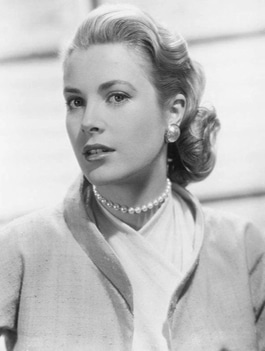
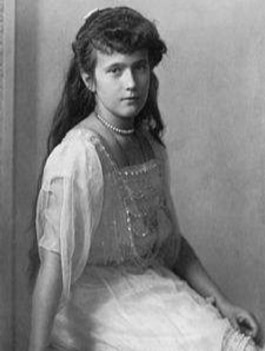
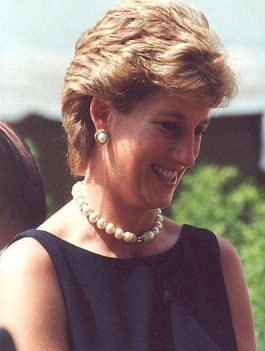
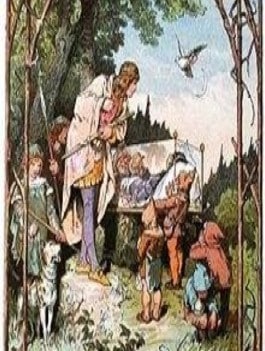
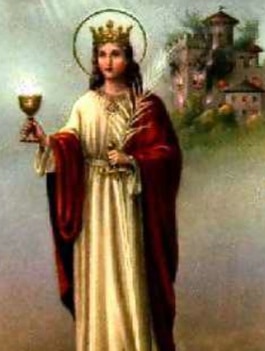
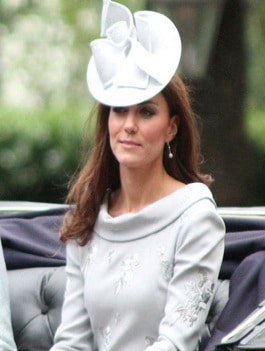
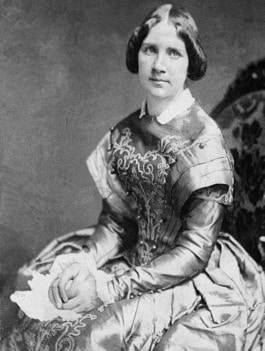
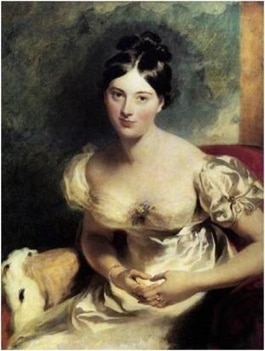

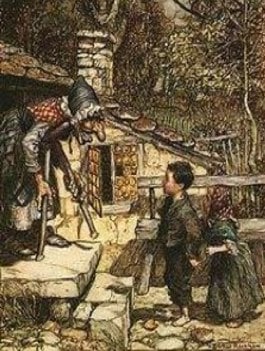
What a load of hogwash. Katherina Schraderin is the name of a fictinal figure in Hans Traxler’s satire “The truth about Hansel and Gretel”. This whole account is entirely fictional and is here presented as truth.
Get your facts straight before you type, dude!
Hello Silver Petticoat Review Team!
Rude as “Frank Wank” may be, he’s right:
Katharina Schraderin’s admittedly riveting story is a fictional satire by German cartoonist and author Hans Traxler.
Published in 1963, the Grimm memorial year, the book is called “Die Wahrheit über Hänsel und Gretel” (The Truth about Hansel and Gretel) and was taken quite seriously in the German media at the time.
A Japanese professor even wanted to make a scientific translation.
The book seemed so credible that a second edition was published with the addition “A credible parody.